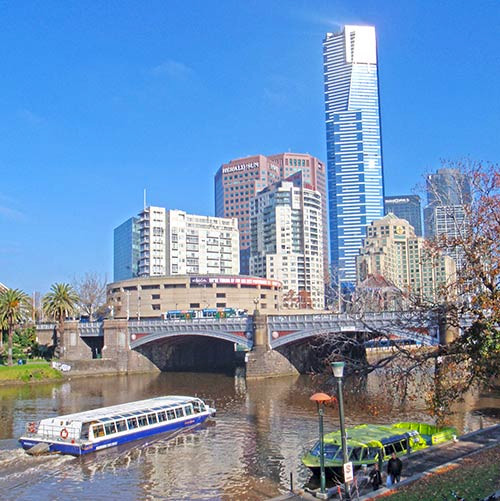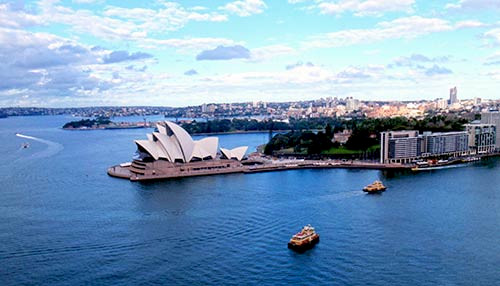Australian cities and waterways: Connections, crossings, celebrations, and culture
Bill Dennison ·The close relationship that Australian cities have with their waterways is due to several factors. The majority of Australia's population is along the coast as a result of proximity to shipping, moderate climates, availability of freshwater and lifestyle preferences. The waterways have been a source of water, food and transport since early European settlement and for the prior forty thousand years of indigenous peoples on the continent. Australians have embraced water activities like swimming, sailing and surfing and being in or on the water provides a close connection.
There are various manners which people in Australian cities have developed for crossing the waterways, including bridges, tunnels and ferries. Some of these methods of crossing are iconic like the Sydney Harbour Bridge or Sydney Harbour ferries, and some are simply utilitarian like the Clem Jones tunnel in Brisbane. The historic bridges like Princes Bridge in Melbourne or Story Bridge in Brisbane are very attractive and the City Cats plying the a Brisbane River have helped rejuvenate the riverfront.

Celebrating waterways is an important facet of developing a public expression of the passion people have about the waterways associated with their cities. Fireworks, boat races and festivals can serve to bring people together to celebrate their collective history and their relationship with the waterways. Australian cities have various different ways of celebrating the waterways, but at least once during the year, there tends to be a celebration involving waterways.

Australian waterways have developed strong cultural linkages through music, dance, sport, and theatre. Even the location of the cultural precincts of most Australian cities are adjacent to the waterways, like Sydney Opera House, and Southbanks in both Melbourne and Brisbane. This cultural connection leads to a nice blending of natural and cultural aspects and is carried through in many societal activities.

There are large gradients in Australian waterways. Upstream to downstream gradients, inshore to offshore gradients or pristine to polluted gradients are common in Australian waterways. The gradients are typically easily traversed in a short amount of time using a small boat. This juxtaposition of different features within a short traverse makes the geographic comparisons more marked and more meaningful. The reason for the strong gradients is the relatively low ambient nutrient background conditions (oligotrophic), due to highly weathered soils and little coastal upwelling. The human impacts generally stand out from these background conditions.
Australian waterways have iconic species which often serve as conservation icons. Dolphins in the Swan River, Western Australia, dugong and turtles in Moreton Bay, Queensland, platypus in creeks and rivers of eastern Australia, Mary River cod, sawfish, sharks or crocodiles serve as icons in different regions.
As Australia continues to develop and mature as a nation, I hope that this wonderful connection that Australians have with their waterways is not lost. Unlike the buried streams of European and North American cities in which the connections with the waterways have been severed, Australians aspiring to have healthy waterways adjacent to where they live could be a model for sustainability.
About the author
Bill Dennison

Dr. Bill Dennison is a Professor of Marine Science and Vice President for Science Application at the University of Maryland Center for Environmental Science.

